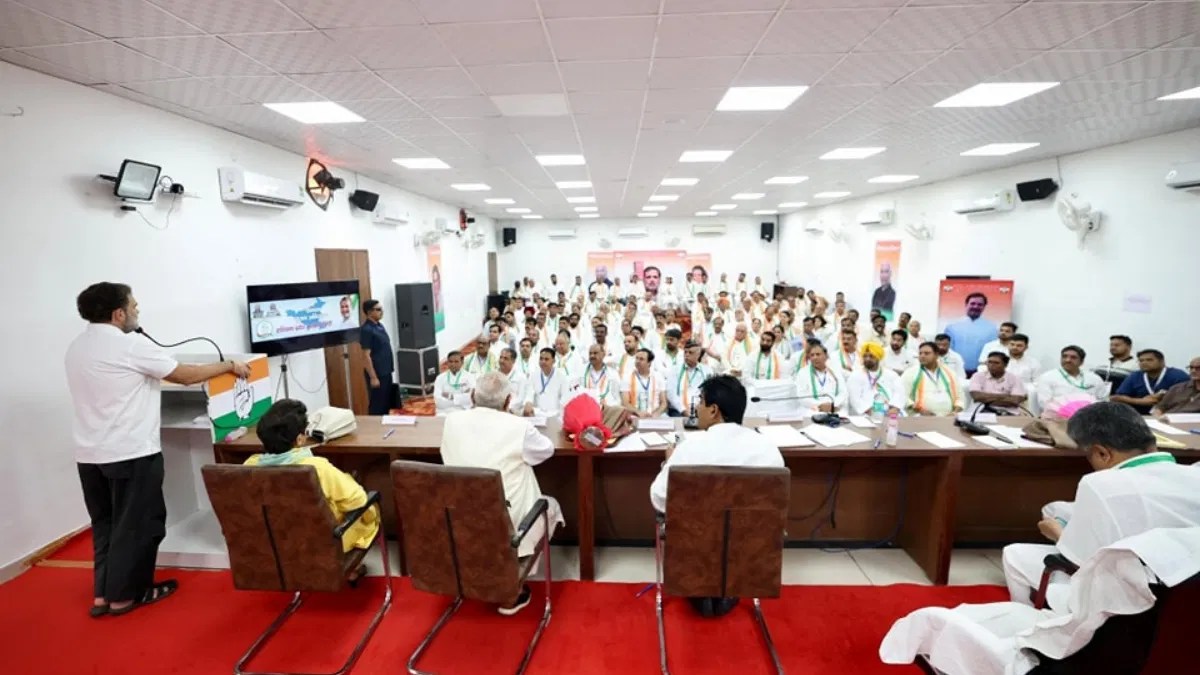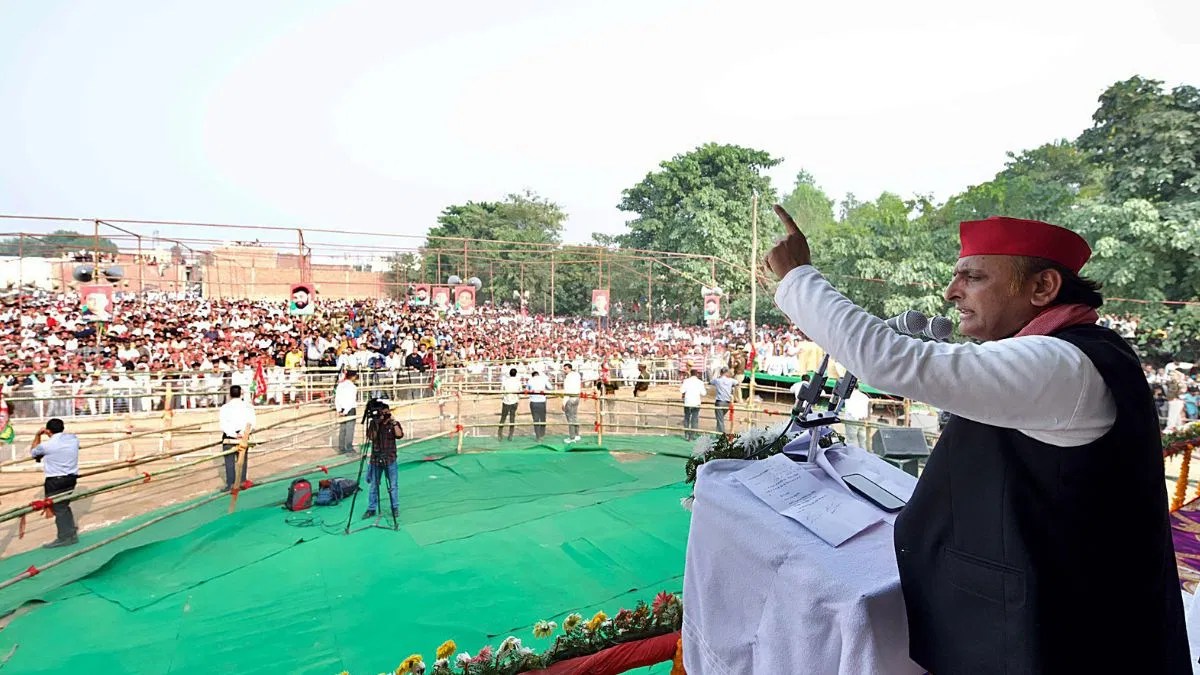Congress taking leaf out of BJP’s caste playbook in Haryana
Gurugram: In a shift aimed toward reclaiming the bottom it misplaced within the 2024 Haryana meeting elections inside months of sturdy efficiency within the state within the Lok Sabha polls, the Congress has evidently adopted the Bharatiya Janata Occasion’s (BJP) profitable caste-based technique whereas effecting a serious organisational overhaul in 11 years.
By counting on non-Jat communities, significantly Different Backward Courses (OBCs), whereas appointing 32 district presidents just lately, the Congress has signalled a deliberate shift away from its conventional Jat-centric voter base to construct a extra inclusive caste coalition, aiming to problem the BJP’s dominance which has been in energy within the state since 2014.
A have a look at the Congress’s listing of district presidents introduced on 12 August reveals the get together’s restructuring mirrors the BJP’s strategy, which secured its third consecutive time period in Haryana by consolidating non-Jat and OBC votes.
Forward of the 2024 state elections, the BJP changed its chief minister for 10 years Manohar Lal Khattar with Nayab Singh Saini, an OBC chief. It proved to be a masterstroke in interesting to backward courses, because the get together received the Meeting election, defying all predictions of a Congress victory.
Additionally Learn: In faction-ridden Haryana, Rahul’s revival mission for Congress requires return to fundamentals
Mimicking BJP’s caste calculus
Taking a leaf out of the BJP’s playbook, the Congress has appointed 10 OBC district presidents, together with 4 Gujjars (Ramchandra Gujjar for Kaithal and Netrapal Adhana for Palwal amongst them), three Yadavs (Vardhan Yadav for Gurugram Rural, Satyavir Yadav for Mahendragarh and Sanjay Yadav for Jhajjar) and three from different OBC castes.
This transfer is being seen as a direct response to the BJP’s “Saini card”, and the Congress positioning itself as an advocate of OBCs within the subsequent electoral cycle. The BJP just lately introduced 27 district presidents for Haryana’s 22 districts, with further presidents for areas like Hansi, Higher Gurugram, Gohana, Dabwali, and Ballabhgarh, hinting at potential new district formations within the state.
हरियाणा प्रदेश कांग्रेस कमेटी के सभी नवनियुक्त जिलाध्यक्षों को हार्दिक बधाई एवं शुभकामनाएं। pic.twitter.com/k9Ger3rOOF
— Udai Bhan (@INCUdaiBhan) August 13, 2025
The BJP appointed eight OBC district presidents, 5 Brahmins, 5 Punjabis, 4 Jats, two Rajputs, two Scheduled Castes (SC), and one Bania, with 4 ladies included within the listing. This numerous illustration underscores the BJP’s technique of balancing caste equations whereas sustaining a broad caste attraction.
For the Congress, it was the primary occasion of establishing district organisations the state in 11 years—no organisational construction may very well be arrange when Ashok Tanwar was Haryana Pradesh Congress Committee chief from 2014 to 2019, or when Kumari Selja was on the helm from 2019 to April 2022 or within the first three years of incumbent state president Udai Bhan who took over from her.
Chopping on Jat dominance
Traditionally reliant on Jat votes, which account for roughly 25 per cent of Haryana’s inhabitants, the Congress has now intentionally lowered Jat dominance in its organisational construction.
Solely six Jat leaders—Anirudh Choudhary (Bhiwani Rural), Rishipal Singh (Jind), Mewa Singh (Kurukshetra), Ramesh Malik (Sonipat Rural), Sanjeev Kumar Dahiya, and Parvinder Pari (Ambala Cantt)—have been appointed as district presidents.
Even in Jat strongholds like Rohtak and Jhajjar, non-Jat leaders have been made district presidents, marking a departure from the get together’s Jat-centric politics which backfired within the 2024 elections as a consequence of restricted consolidation.
Political analyst Kushal Pal, principal at Indira Gandhi PG Faculty, Ladwa, informed The Print Monday the Congress seems to have learnt from its electoral errors.
“Earlier than the 2024 elections, it was presumed that the BJP’s appointment of Nayab Saini as CM would polarise voters on Jat versus non-Jat strains. Nevertheless, the Congress itself turned the election right into a Jat versus non-Jat contest with the get together projecting Bhupinder Singh Hooda as the subsequent CM in nearly each election assembly,” Pal stated.
“Casteist remarks in opposition to Selja by a Congress chief in Narnaund, the place Hooda loyalist Jassi Petwar was contesting, and Selja’s subsequent absence from the marketing campaign worsened the state of affairs. The brand new district president listing reveals the Congress is now correcting these errors,” he stated.
Broadens attraction to common, minorities
To widen its voter base, the Congress has appointed 9 non-Jat common class leaders, together with three Punjabis, two Banias, two Rajputs and two Brahmins, focusing on city and buying and selling communities.
Apart from, 5 SC leaders and one Muslim chief have been appointed to strengthen Congress’s maintain in Mewat and attraction to minority communities.
Pal famous that Dalits, historically Congress voters, had been drifting away from the get together. “With 5 SC district presidents, in comparison with the BJP’s two, the Congress is making a concerted effort to win again Dalit help,” he stated.
The appointments additionally replicate Congress’s try to stability its inside factions, significantly between former chief minister Bhupinder Singh Hooda and Kumari Selja.
Hooda’s faction dominates the listing, however Selja’s camp has secured key positions, particularly in geographical space alongside the Grand Trunk Street, or the GT Belt (Panchkula, Ambala, Yamunanagar, Kurukshetra, Karnal and Panipat), which has 11 district items.
Of those, 5 leaders every from the Hooda and Selja camps have been accommodated.
Hooda’s faction dominates Karnal, Kurukshetra, and Panipat Rural, with Panipat City’s appointment nonetheless pending.
Lesson from 2024
Jyoti Mishra, assistant professor of Political Science at Amity College, Mohali, and a former researcher on the Centre for the Research of Creating Societies (CSDS), informed The Print that Congress’s 2024 defeat stemmed from its over-reliance on Jat management and the idea that Jat votes alone would suffice.
“The BJP, in distinction, constructed a broad coalition, fielding candidates and operating campaigns that appealed to numerous caste teams, which paid off handsomely. The Congress is now widening its scope via this management restructuring,” Mishra stated.
She added that by appointing OBCs, Dalits, Brahmins, Punjabis, and different non-Jat leaders, the Congress is signalling inclusivity. “This technique not solely counters the notion of being a Jat-centric get together but additionally positions the Congress to attach with a broader societal cross-section. If sustained with constant outreach, this strategy might considerably bolster the Congress’s prospects in Haryana,” Mishra concluded.
(Edited by Ajeet Tiwari)
Additionally Learn: Cracking whip on officers with suspensions & wage cuts, Saini govt follows in Khattar’s footsteps
latest video
latest pick
news via inbox
Nulla turp dis cursus. Integer liberos euismod pretium faucibua






















